No self-medication
- Gait disorders in children: causes and symptoms
- Causes of gait disorders
- Clubfoot is
- Popular
- Individual approach
- What is Valgus Foot Deformity?
- What is varus deformity of the foot?
- Treatment of flat feet in children and adults in Minsk
- pathogenesis
- Symptoms of Mobius Syndrome
- First signs
- Comparison table of vitamins for pregnant women
- Folic acid: benefits
- Main symptoms
- Methods for correcting squint in adults
- causes
- How to recognize strabismus in children?
- What causes hypotension?
- Sudden changes in posture
- When you eat
- If it rises too quickly
- What if it is vegetative vascular dystonia?
Gait disorders in children: causes and symptoms
Walking is a familiar but demanding process. When a person walks step by step, all the muscles in their body work together, with the central nervous system and brain coordinating the movement. Several factors are responsible for efficient gait:
- Correct anatomical structure of both legs.
- Absence of muscle dysfunction.
- Correct mobility of the joints.
- Good neuromuscular coordination between the brain and the musculoskeletal system.
- Absence of abnormalities in the middle ear, which is responsible for coordination.
If at least one of the factors does not correspond to the norm, the gait is impaired in one way or another.
Causes of gait disorders
If a child has difficulty walking, it may be an indication that something is wrong with part of the CNS or brain. However, the causes of gait disorders are not always associated with abnormalities of the internal organs. There are a number of factors that have nothing to do with brain activity and the functioning of the nervous system (gait disorders occur here because the child simply feels pain when walking):
- Previous trauma. If the child has suffered a fracture, sprain or sprain, it may cause pain for some time while walking.
- Existing injuries.
- An ingrown toenail.
- Calluses, spurs or warts on the foot.
- Long walking times.
- Uncomfortable shoes.
Finally, orthopedic problems such as clubfoot or flat feet also cause gait problems.
Clubfoot is
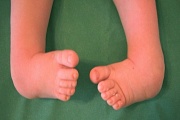
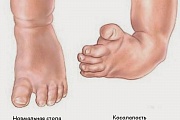
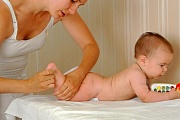
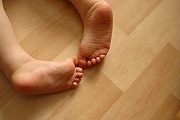

We guarantee that your personal information will not be shared and that we will not send advertising to the phone number provided. Your information is needed to provide feedback and make an appointment with a specialist at the clinic.
- About Us
- Our doctors
- Pediatric Dentistry
- QUESTIONS AND ANSWERS
- reviews
- Prices
- Images and videos
- partner
- Contact
Popular
The material on this website is for informational and educational purposes only. They should not be used as medical advice. Diagnosis and treatment options are the sole responsibility of the doctor! 'The Clinic of Pediatrics and Pediatric Surgery is not responsible for any negative consequences resulting from the use of the information on pedclin.ru.
THERE ARE CONTRAINDICATIONS. PLEASE CONSULT A SPECIALIST.
Professional Medical Center Ltd.
Individual approach
Treatment with the Ilizarov method requires, first of all, an individual approach to each patient and constant contact with the doctor who operated on him, emphasizes Aleksandr Alexandrovich. In order for the process of bone fusion to proceed properly, the patient should be monitored for several months after the operation by a specialist who will visit him once a week to control all stages of recovery. The doctor will take x-rays and make recommendations to improve mobility. This treatment process is optimal.
Correcting the shape of your legs is not only a solution to an aesthetic problem, but also a contribution to your own health. The deformation (curvature) of the limbs leads to chronic overloading of the joints, which multiplies the risk of knee and hip osteoarthritis and, after years, leads to the need for endoprosthetics. In 70 % cases, according to the doctor, a joint replacement would not have been necessary if the foot straightening operation had been carried out in a timely manner, i.e. at a young age.
What is Valgus Foot Deformity?
If the height of both arches of the foot is reduced and at the same time the axis of the foot is curved, it is called a valgus foot deformity. This is a valgus foot deformity. It causes the toes and heel to bend outward and the metatarsals to fall inward. This disease occurs in many patients of all ages, so its treatment in Minsk is a very popular service.
The most common victims of this disorder are Children – Preschool and primary school children. The diagnosis itself is also quite common: with more than half of the cases diagnosed, it ranks first among other types of foot deformities.
The main factor contributing to the development of this pathology is dysplastic changes in the skeleton. Muscle and tendon weakness in the feet also plays a role. All of these factors together affect the musculoskeletal system. Flat feet treatment plan The treatment plan for flat feet depends on the cause: congenital predisposition, trauma, rickets or other diseases.
What is varus deformity of the foot?
When does varus foot deformity occur? varus foot deformity, This causes them to twist inwards, resulting in uneven distribution of the load. More force is applied to the outside and the feet are brought into an O shape.
In addition, it should not be confused with clubfoot: in contrast, varus deformity is acquired and not congenital. In infants up to about three months of age, this position of the arch of the foot may be normal due to the hypertonicity of the muscles. Nonetheless, Adult However, patients diagnosed with this condition must be treated by a qualified doctor.
Treatment of flat feet in children and adults in Minsk
It is important not to self-medicate and not to resort to so-called folk recipes: this can do more harm than good. Correction of foot position Correction of foot position should be carried out under the supervision and support of a doctor: podiatrist, neurologist, traumatologist. The following methods are used for treatment Treatments The choice of procedure depends on the specifics of the diagnosis and the condition of the body.
Surgical treatment is only recommended when there are no other options. As a rule, this occurs when the foot is already severely deformed and its condition can only be corrected through surgery. In other cases, the most painless methods are used. The sooner the earlier the diagnosis is made, the greater the chance of avoiding surgery through non-invasive techniques.
The earlier the diagnosis is made, the greater the chance of avoiding surgery using non-invasive methods. In addition to preventive exercises and training, physiotherapy is also used.. It is as conservative and safe as possible because it does not involve any interventions or risks to life and health. It is suitable for patients of all ages, especially children.
pathogenesis
The mechanism by which Mobius syndrome develops is poorly understood. The pathogenesis is thought to result from vascular abnormalities during fetal development. Drug and alcohol abuse and other factors contribute to the occurrence of this neurological disorder.
The disease is inherited in an autosomal dominant manner, but can also be autosomal recessive. It affects the 6th and 7th cranial nerves. The incomplete development of these nerves leads to facial paralysis and oculomotor disorders. The problem can also affect the other 12 pairs of cranial nerves, each of which is responsible for such processes in the body:
- Olfactory nerve – enables the perception of smells.
- Optic nerve – transmits visual information.
- Oculomotor nerve – is responsible for the external muscles of the eyeball.
- Block nerve – provides the connection between the superior oblique muscle of the eyeball and the CNS.
- Troinicus nerve – is responsible for the innervation of the chewing muscles and the face.
- Abducens – lateral eye movements and blinking.
- Facial nerve - controls the facial muscles, contains an intermediate nerve that transmits the taste buds in the front third of the tongue, skin sensation and finger sensation.
- Frontoparietal nerve – is responsible for hearing.
- Lingual-pharyngeal – controls the swallowing process and is responsible for the sensation of taste.
- Vagus – carries sensory and motor signals to many organs, particularly the chest and abdominal cavity.
- Complementary muscle – is responsible for moving the neck muscles, lifting the shoulder and bringing the scapula closer to the spine.
- Sublingual – is responsible for the movement of the tongue.
Congenital optic nerve paralysis is often manifested by underdevelopment of the 3rd, 6th, 7th, 9th and 12th pairs of cranial nerves. pair of cranial nerves. This may be due to the damaging effect of CSF or cerebrospinal fluid in the area of the fourth pair of nerves.
Symptoms of Mobius Syndrome
Congenital neurological diseases are characterized by a syndrome of various anomalies of several organs and systems. Symptoms of Möbius syndrome are most commonly associated with facial muscle paralysis, severe musculoskeletal problems, and foot deformities. Other symptoms include:
- Speech and eating problems – patients have difficulty swallowing and chewing due to the underdeveloped muscles of the jaw, tongue, throat and larynx. There are also problems with the speech system.
- Dental problems – the lack of mobility of the tongue causes food to build up behind the teeth, leading to tooth decay and other problems. The syndrome is characterized by a cleft palate.
- Hearing problems – patients have reduced hearing ability. There is a high risk of hearing loss due to common ear infections caused by the anatomy of the auricles.
People with this syndrome are born with micrognathia (small chin) and a small mouth, as well as a short or abnormally shaped tongue. The upper mouth has an abnormal opening, a cleft palate. Dental problems such as missing or displaced teeth are also quite common. Such abnormalities cause difficulty eating, breathing and speaking. Patients often suffer from breathing problems, sleep disorders and sensory integration disorders.
There is also a lack of tear secretion and disorders of the vestibular system. The patient's skin is tense and the corners of the mouth are always pulled downwards. Various limb anomalies are characteristic, such as clubfoot, supernumerary toes, syndactyly, etc.
First signs
The first obvious signs of Mobius syndrome are a lack of facial expression. The following symptoms are also characteristic of this condition:
- Abnormal body structure and limited mobility.
- Partial or complete dysphagia (difficulty swallowing).
- Difficulty sucking and breathing.
- Deformed feet.
- Sensory perception disorders.
- Ophthalmological and otolaryngological disorders.
- Tight facial skin.
- Disorders of the vestibular system.
- Absence of tear secretion.
- Deformation of the chest (Polanda syndrome).
Comparison table of vitamins for pregnant women
A comparison table of vitamins for pregnant women will help make the right choice. The comparison is made taking into account the composition of the complex, including the chemical forms of the main vitamins and minerals.
* Ca - calcium, I - iodine, Mg - magnesium, Mn - manganese, Se - selenium, Zn - zinc.
From the comparison table of vitamins for pregnant women it is clear that the preparations have both common and individual characteristics. However, it is difficult to go into detail about each individual ingredient, so it is worth mentioning the most important aspects.
IODINE CONTENT
The content of this mineral is especially important for Russian women, since there is iodine deficiency in almost all regions of the Russian Federation. A RAMS study found that Russian women consume only a third (27-37 %) of their daily iodine requirements during pregnancy. And iodine deficiency can lead to abnormal intrauterine development of the baby. Iodine deficiency also causes thyroid disease in mother and child. It has been proven that iodine deficiency is associated with an increased risk of toxicosis, frozen pregnancy, spontaneous miscarriage and abnormal delivery.
Contains iodine: Alphabet Mamino Health, Complivit Trimestrum, Pregnoton Mama, Femibion.
Iodine-free: Vitrum Prenatal, Complivit Mama, Elevit Pronatal.
CALCIUM CONTENT
Not all vitamin and mineral supplements contain calcium, so the situation is ambiguous. Inadequate calcium intake in pregnant women can lead to stunted fetal growth because calcium is a bone building substance. If a newborn has a calcium deficiency, rickets may occur. Of course, a deficiency of this substance is also dangerous for the woman - she has lower bone mineral density, she develops a seizure syndrome, her teeth are more susceptible to diseases and her nails and hair become brittle. However, when it comes to calcium, the happy medium is important. An excess of calcium can also have a negative impact on pregnancy and the birth of a child. So, an excess of calcium can lead to the deposition of calcium salts in the placenta and impair the nutrition of the fetus. Excess calcium also affects the pregnant woman's kidneys and causes eclampsia. The risk of birth trauma increases as the woman's pelvic bones become more difficult to separate and the baby's skull becomes stiffer than usual.
Calcium can also dramatically reduce the absorption of iron because the two substances compete with each other. And iron deficiency is very dangerous for pregnant women. According to gynecologists and obstetricians, taking calcium tablets is indicated only if hypocalcemia is clinically and laboratory evidenced. In such cases, much more calcium is needed than can 'fit' in a tablet or capsule containing other vitamins and minerals; A 'simple' calcium complex for pregnant women will not solve the problem.
A balanced diet, especially consumption of fermented milk products, is sufficient for the normal woman.
Calcium contains: Alphabet Mamino Health, Vitrum Prenatal, Complivit Mama, Complivit Trimestrum, Elevit Pronatal.
Do not contain calcium: Pregnoton Mama, Femibion.
Folic acid: benefits
Why is vitamin B9 (folic acid) included in all prenatal complexes? Why do I need this substance?
The most important function of folic acid is its participation in protein synthesis and cell division. During pregnancy, these processes occur continuously and in large quantities. That is why the need for folic acid is so high in expectant mothers.
Already in the first minutes after conception, the supply of folic acid is an important prerequisite for the normal development of the fetus. Although the woman is not aware that she is pregnant, the nuclei of all organs and tissues are formed in the embryo, the neural tube is formed, from which the spine and brain later emerge. Large amounts of folic acid are required for all of these processes. Severe folic acid deficiency can lead to severe fetal malformations. But even in cases where the deficiency of vitamin B9 is only minor, it can have a negative impact on the child's hematopoietic system, mental development, immune system and the functioning of the nervous system. In addition, folic acid is essential for the development of a healthy heart, blood vessels, kidneys and bladder and contributes to the normal development of the limbs. It is therefore recommended to start taking folic acid before pregnancy and continue it throughout pregnancy.
Recently, however, a cause of folic acid deficiency has also been identified in women taking folic acid. It has been found that around 50 % of people are genetically unable to fully absorb folic acid. These people produce too little of the enzyme that converts folic acid into the bioavailable and active form, L-methylfolate. And 5-25 % of people have no such enzymes at all and cannot absorb folic acid at all. When expectant mothers have these genes, the baby's body cannot absorb enough vitamin B9.
But it's not all bad. There are now complexes for expectant mothers that contain L-methylfolate. This form of vitamin B9 is easily absorbed and fully utilized by all women, regardless of their genetic makeup.
Contains vitamin B9 in the form of methylfolate: Pregnoton Mama, Femibion.
Main symptoms
The symptoms of strabismus do not only refer to external appearances that are immediately visible. It is also accompanied by internal disorders caused by pathological causes of the organ of vision. What causes strabismus in adults?
- Familial predisposition (genetic cause);
- Various traumas, brain diseases
- Psychological trauma (usually the result of severe terror);
- Eye diseases that cause visual impairment or blindness in one eye (cataract, retinal detachment);
- refraction differences between eyes;
- farsightedness, myopia;
- infectious diseases (measles, flu, scarlet fever);
- paralysis of the ocular nerve;
- Stress.
Visual signs of squint that can be identified before visiting a specialist:
- An involuntary contraction of the eye towards the bridge of the nose or temple;
- Unsynchronous eye movements;
- double vision;
- Blinking more frequently;
- Tilting and turning the head to view objects.
The main symptoms are often accompanied by other symptoms that are self-limiting:
- frequent persistent headaches;
- Dizziness;
- perceived loss of visual acuity;
- Discomfort such as balance problems, nausea, vomiting;
- Poor concentration and memory lapses.
If you or your loved ones notice any of the above-mentioned squint symptoms, you should urgently consult an ophthalmologist. Delayed or inadequate treatment leads to disease progression, which can lead to blindness of the squinting eye.
Methods for correcting squint in adults
Today there are various methods for treating strabismus, which are based on conservative treatment, special exercises and, in cases where the above methods do not work, surgery.
1. Wearing glasses when you squintis practically always advisable, regardless of the cause. Based on the diagnosis and examination, the doctor selects appropriate optics to correct refraction, relieve accommodative spasm and improve vision.
2. Apparatus therapy. These are different treatments that are selected depending on the form of strabismus:
- Pleoptica is suitable for patients with unilateral strabismus. The healthy eye is 'switched off' and the patient only sees with a squint. During this manipulation, the central retinal fossa of the affected organ is stimulated with a beam of light or laser. Reflexotherapy and electrical stimulation of the eye are also performed;
- Orthoptics does not show as good results in adults as in children, the improvement may be negligible. Restoration of binocular vision is based on working with a computer and special game programs that serve as a simulator of the damaged eyeball. The exercises are also carried out on a special device - a Synoptoforum;
- Diploptica – a whole system based on special exercises, the use of reading grids and visual field dividers. You carry out the exercises on stereoscopic devices.
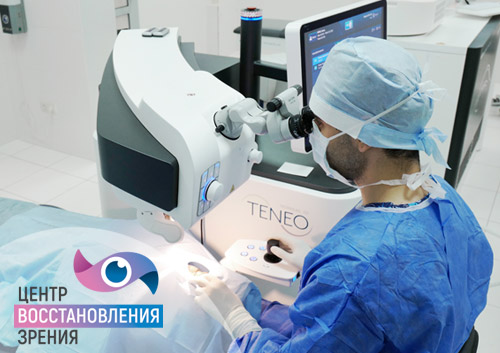
3. Laser vision correction.
If the cause of squinting is a sharp difference in the refraction of the eyes. For example, one eye sees well, while the other eye is nearsighted or farsighted and therefore deviates to the side. With laser vision correction, both eyes are adjusted to the same refraction, vision returns to normal, both eyes see equally well and squinting is eliminated.
causes
Various factors contribute to the development of strabismus:
- inherited predisposition;
- premature birth, low birth weight (up to 2 kg);
- Congenital anomalies in the structure of the organ of vision, especially the eye muscles;
- Severe pregnancy, fetal hypoxia;
- cataract, glaucoma, corneal pathology;
- Diseases of the muscular and nervous systems (myasthenia gravis, multiple sclerosis, meningitis, encephalitis);
- severe refractive errors (astigmatism, nearsightedness, farsightedness);
- Systemic diseases (diabetes, rheumatoid arthritis);
- infectious diseases (diphtheria, scarlet fever, measles, whooping cough, influenza);
- severe stress;
- Excessive eye strain;
- Severe poisoning;
- traumatic brain injuries, including childbirth;
- Tumors of the visual or nervous system.
How to recognize strabismus in children?
Many parents want to know how to recognize strabismus in their child.
The following symptoms may indicate the presence of a pathology
- Visual deviation of the eye to the side;
- Double vision (diplopia) – even if the child cannot speak, the problem can be identified by difficulty in active play and drawing, as well as by the constant tilting of the head to one side;
- Visual impairment – Amblyopia often develops when the affected eye does not participate in the visual process;
- 'flattening' of the surrounding world (lack of three-dimensionality), as a result of which the child is unable to correctly estimate the distance to objects;
- Headache and discomfort after watching 3D movies.
If strabismus is suspected, an ophthalmologist should be consulted. Only a specialist can make a correct diagnosis.
What causes hypotension?
Sudden changes in posture
Getting up quickly or sitting up in bed abruptly, for example. This is called orthostatic hypotension. In an upright position, gravity causes blood to flow into the legs and abdomen and the pressure in the blood vessels decreases. The autonomic nervous system increases the heart rate and constricts blood vessels to move blood out of the legs and normalize pressure.
A healthy person would not feel any discomfort as this mechanism works very quickly. However, in some cases the autonomic nervous system does not function properly. As a result, blood pressure drops, blood does not rise from the legs, the brain does not receive enough oxygen, and hypotension symptoms appear. This happens, for example, in pregnant women, in people with certain diseases such as diabetes and in one in five older people.
Sometimes it also occurs in healthy people, e.g. B. in hot weather, and there's nothing wrong with that. But if you feel dizzy every time you change your posture, you should see a doctor.
When you eat
After a meal, blood rushes into the digestive tract, and the autonomic nervous system constricts blood vessels and increases the heart rate to prevent too great a drop in pressure. However, in around a third of older people it is not able to cope with such a burden. This condition is called postprandial hypotension. In this case, medical attention is required.
If it rises too quickly
As you can easily imagine, this problem occurs most often in children and adolescents: rapid growth causes the autonomic nervous system to malfunction. This leads to symptoms such as dizziness and fainting when changing posture or bending over. This is called neurogenic hypotension. Usually, children outgrow this problem and the hypotonia goes away on its own.
However, sometimes neuromediated hypotension is a sign of a serious neurological disease. In this case, the affected person needs the help of a doctor.
What if it is vegetative vascular dystonia?
Vascular dystonia is a non-existent diagnosis that is widespread in the former Soviet Union. If your doctor tries to attribute your low blood pressure to irritable bowel syndrome, you should see another specialist to find out why you're really feeling unwell.
If your blood pressure is consistently lower than normal but you feel fine, there is nothing to be done. If nausea, dizziness or fainting occurs, see your doctor.
Uncertainty: Low blood pressure can be a symptom of many different medical conditions, so tests and examinations should be performed to determine the true cause. This is very important because treatment depends on the diagnosis.
However, there are also general recommendations that you should follow if you suffer from hypotension:
Avoid psychoactive substances.
Alcohol, tobacco, and smoking mixtures like those used in bongs can lower blood pressure. In addition, sometimes the blood vessels are affected by drugs prescribed for completely different purposes. Therefore, if you are taking any medications or dietary supplements, you should always inform your doctor about them.
Drink plenty of fluids and salt.
In summer you quickly lose water and minerals. Sufficient water significantly reduces the risk of hypotension.
Avoid situations that cause a drop in blood pressure.
Hypotension can be caused by shortness of breath, severe stress or anxiety, but also by standing for long periods of time, standing up suddenly, or eating a large meal.
At the first signs of hypotension, you should sit or lie down.
Wear compression clothing.
This recommendation only applies to pregnant women. Your doctor can help you find an appropriate version.
Do simple exercises
In general, physical activity increases blood flow back to the heart and raises blood pressure. Therefore, regular aerobic exercise and light resistance training reduce the chances of you developing hypotension.
Read more:- 2 year old child with clubfoot.
- squinting in adults.
- The baby has short legs.
- How to cure a clubfoot.
- What should you do if your child has tics?.
- Causes of tiptoe walking in babies.
- A child begins to have clubfoot between the ages of 1 and 5.
- Toe movement in children.
